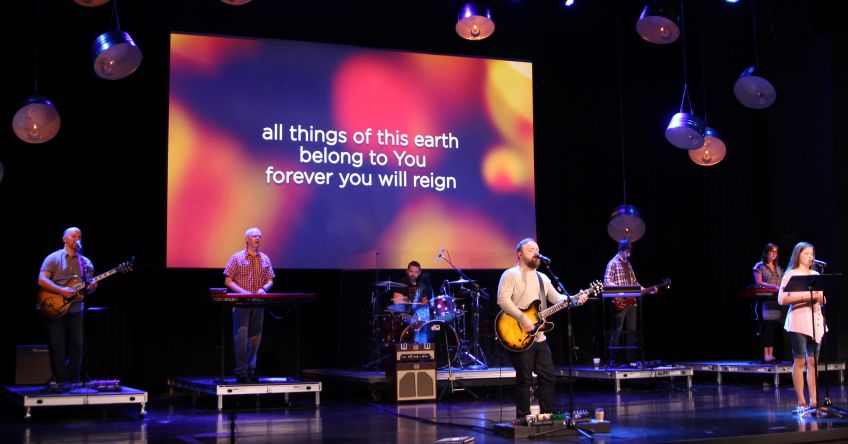Written by Duke DeJong
Churches across America both big and small are looking for ways to enhance their worship spaces with color and texture. I love this trend because it brings more visual artistry to the church and it helps our relevance to the younger generations who continue to become more and more visual. For churches looking to enter into the world of stage design, here are a few thoughts to get you started.
Finding Resources
The key is to find out what your resources are. I'm a huge fan of LED and intelligent lights but most churches aren't able to start with those. Many churches have a few spare dimmers and par cans lying around and that can be a great way to get you started. Pick some colors you like, put those gels in your lights and aim them at something reflective. You've now added color to your stage.

Let there Be Light
Next, find out what type of materials you have to light. I love a stage with darker colored walls so I can put something that lights well in front of it, helping any over flow light to disappear. Some of my favorite things to light include various fabrics like Poly Muslin, Poly Sheen and Spandex (must be fire retardant), Coroplast and even Bubblewrap.
Reflective Properties
Really anything that reflects light has potential as a design element. You can make great structures out of metal, wood or even PVC and then cover them with something light friendly. The opportunities are endless and to get started you should see what materials people in your church have access to or the ability to work with. Whatever you have access to should dictate what materials you start with.

Wrapping it Up
If you can't come up with an original idea, find some designs from other people that look like something you can do a variation of and simply try it out. If it works first try, awesome! For most of the designs I've done I will see elements I like somewhere and then I do a little tweaking and adjusting to make it something that works right for my space. If something doesn't work just right one week, try tweaking it for next week. The key is to use whatever resources you have access to, find a concept you like and try it out. If you ever want to bounce ideas off of someone or need some ideas to get you started, let me know.